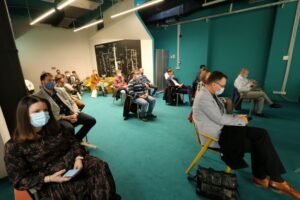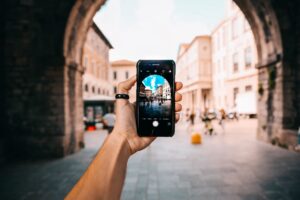The primary function of public lighting is to ensure the traffic of people and vehicles at night, and its secondary function is highlighting of the area ambient conditions in a manner that does not endanger the safety of traffic nor causes light pollution. According to the Fund for Environmental Protection and Energy Efficiency, public lighting takes 3% of total energy consumption in Croatia.
As part of the communal infrastructure of each populated area, public lighting is the responsibility of individual cities and municipalities. The work unit Public lighting was established in Rijeka as part of Energo in 2002, which on behalf of the City of Rijeka took care of the management of public city lighting. In addition to regular maintenance, Energo takes care of rising the illumination quality while reducing light pollution and increasing energy efficiency of the entire system. Several large projects have been implemented to replace the old and energy inefficient lighting with new, energy efficient and environmentally friendly lamps using LED technology, with the aim of reducing light pollution and increasing energy efficiency.
Research has shown that only a different regulation of public lighting can save up to 50% of energy, and through a system of remote control and monitoring significantly reduce the maintenance costs. Following this is the project of the Smart Network for Public Lighting Management Elektrokovina Plus, part of the Cekom project called Energy & Environment. The aim of this project is to research, set up, develop, prove and laboratory validate the concept of a network for smart management of public lighting.

The basic recommendations for efficient public lighting and dynamic savings are the use of energy efficient light sources and the use of energy efficient lamps. Unlike the “classic light bulb,” where 95% of the total energy consumed goes to heat and only 5% is converted into the light, with the development of LED sources, a completely new chapter in the development of lamps begins. Thus, for the efficient LED diodes invention, which emit blue light and enable the invention of the bright and energy efficient source of the white light, scientists Akasaki, Amano and Nakamura received the 2014 Nobel Prize in physics. Today, LED lighting is a new standard in public lighting, given that the lamps, which are now in use, have exactly the power needed to meet the lighting requirements of the space in which they are placed. Different light characteristics are obtained by means of small optical lenses that are placed directly on the LED sources, thus almost completely eliminating losses inside the lamp. The electronic driver can be easily programmed, which allows the exact power of the lamp to be determined without unnecessary losses. In addition, the electronic components and LED sources enable real-time control of the lamps, which further reduces the required power and electricity consumption.
The development of light sources and lamps has been accompanied by the development of technology used to control lamps. The main reason for the implementation of the lamp management was to reduce the power of lamps in order to achieve savings during the part of the night when the traffic density is reduced, i.e. the rhythm of life in urban areas is monitored. In addition to savings, the management of lamps is also related to the obligation of introducing the light consumption control arising from the Light Pollution Protection Act. Cities and municipalities must determine with the lighting plan when the outdoor lighting will be turned off or reduced to at least 50 percent at night, in order to influence the results of light pollution that has devastating effects on flora and fauna. And while a large number of animal species whose diet is based on hunting in the dark are dying of hunger, light pollution negatively affects the plant world, not only directly but also indirectly through the negative impact on insects that pollinate plants and members of other animal species that live in interaction with plants. The impact of light pollution on humans is also huge. The absence of complete darkness negatively affects sleep leading to chronic health problems.

The first and until recently the only way to control the lamps was to reduce the power of the lamp using a control line. The next step in power management, and thus the luminous flux of the lamps, was the installation of a component containing an internal clock, most often factory programmed, to operate in power saving mode a couple of hours before and a couple of hours after midnight. But with the appearance of LED lamps, everything is changing. Fully electronic components and semiconductor light sources allow the regulation of the luminous flux in the range from 0 to 100%, and wireless transmission of control signals is increasingly used. There is a possibility of connecting the lamp to the Internet, and the implementation of various sensors inside the lamp that would facilitate the development of Smart City systems. This enables control of light emission without dissipation of light into the environment and with high savings for users (from 50 to almost 80%).

For the purposes of illumination management and monitoring of the smart grid operation within the project activity Research of Concepts, Technology Selection and Development of the Smart Grid for Public Illumination, some new devices will be developed within the Energy & Environment project. The system is designed through a gateway unit and a router/ controller unit, thus solving wireless lamp control. While the router/controller of the device will be intended for the management and control of the public lighting luminaires operation and various types of sensors, the task of the gateway unit is wireless communication with the central software and with the router/controller units. The central software will integrate the configuration, monitoring and management of the entire smart network system for public lighting management, and its users will primarily be employees of municipal utility companies and local self-government units in charge of the public illumination operational management.
All devices in the Central Software will also contain information about the geographical location. In this way, a visualization of the positions of individual devices will be obtained. In addition to the above, the state of the device will be possible to see and the ability to send commands to an individual or more devices, or to mark groups of devices and assign predefined work programs.



